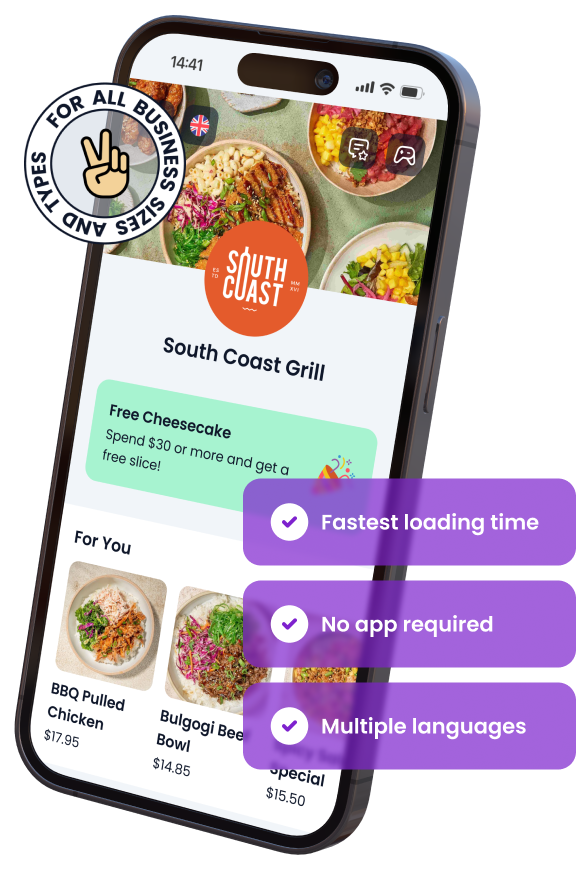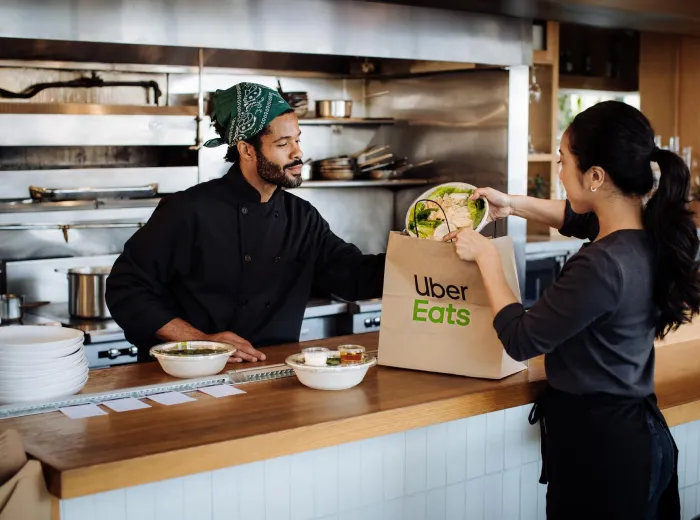

Opening a Restaurant in Saudi Arabia: 10 Mistakes Not to Make
Opening a restaurant in Saudi Arabia can be an exciting and rewarding venture, but it’s certainly not without its challenges. Many entrepreneurs underestimate just how different the business environment can be here, especially if they’re used to operating in other regions. From licensing complexities to cultural expectations, there are several unique factors that can trip up even the most seasoned restaurateurs.
The truth is, some mistakes are far too common — and often entirely avoidable with the right knowledge and preparation. Whether you’re a local entrepreneur or an international investor looking to enter Saudi Arabia’s rapidly growing food scene, it’s crucial to know what to avoid from the very beginning.
In this article, we’ll walk through ten of the most frequent (and costly) mistakes people make when launching a restaurant in Saudi Arabia. I’ll not only explain what these pitfalls are, but also offer practical advice to help you sidestep them — drawn from years of hands-on experience consulting restaurant owners throughout the region.
If you’re serious about opening a successful restaurant in Saudi Arabia, this guide will help you avoid unnecessary delays, hefty fines, and wasted investments — and put you on the right path to a smooth and profitable launch.
Skipping Saudi Arabia’s Strict Licensing Process
Many restaurant owners assume the licensing process in Saudi Arabia is straightforward — but that couldn’t be further from the truth. In reality, the process here involves multiple government bodies, strict documentation, and approvals that can take weeks or even months to secure. Missing even a single document or step can delay your opening significantly, or worse, lead to hefty penalties and business closure orders.
Before signing a lease or hiring staff, you must understand what licenses you’ll need, how to apply, and where delays often happen. Let’s break this down clearly.
Why Licensing Is More Complex Than You Think
In Saudi Arabia, opening a restaurant requires approvals from multiple agencies, and the process isn’t optional — it’s mandatory. Here are the key licenses you’ll need:
- Commercial Registration (CR): This is your legal business license, issued by the Ministry of Commerce. You cannot operate without it.
- Municipal License (Baladiyah License): Issued by the municipality (Baladiyah) where your restaurant is located. This covers location approval, cleanliness standards, and local zoning.
- Food Safety License: This comes from the Saudi Food and Drug Authority (SFDA), ensuring your restaurant complies with food safety rules, including kitchen design and hygiene protocols.
- VAT Registration: Required by the Zakat, Tax and Customs Authority (ZATCA) if your revenues exceed the VAT threshold.
- Saudization Compliance Certificate: This ensures your restaurant meets the required Saudi national employment quotas under the Nitaqat system.
Without these in place, you can’t legally open — and inspectors do conduct surprise checks. It’s not uncommon for restaurants to be shut down within days of opening if paperwork is incomplete.
Common Delays and How to Avoid Them
Here’s where many first-time restaurant owners hit snags — but these problems are avoidable with advance preparation:
- Missing Documents: Applications typically require copies of your ID, lease contract, restaurant plans, CR, and tax certificate. Forget one, and your file won’t even be reviewed.
- Lease Issues: You must submit a commercial lease contract that matches your CR details exactly, including location, square footage, and property purpose (it must state “restaurant use”).
- No Local Sponsor (for Foreign Investors): If you’re a non-Saudi investor, you’ll need either a Saudi partner or a license through the Ministry of Investment (MISA). This process takes time and requires separate approvals.
The key to speeding up the process is to work with local legal advisors who specialize in food service licensing. They can flag issues early, prepare your applications correctly, and follow up with the authorities on your behalf — which can save you weeks of waiting.
Helpful Link:
Ministry of Commerce — eServices
Underestimating the True Startup Costs
One of the biggest mistakes I see — not just in Saudi Arabia, but worldwide — is restaurant owners underestimating their initial costs. However, in Saudi Arabia, this problem tends to be amplified due to unique market dynamics and regulatory requirements. Many first-time operators focus solely on rent and kitchen equipment, but there are several hidden costs that can quietly drain your budget before you even open your doors.
If you don’t budget carefully from the start, you risk running out of funds mid-project — and that’s a mistake very few businesses recover from.
Commonly Overlooked Expenses
Most restaurant owners remember to budget for the basics: rent, kitchen equipment, furniture, and initial inventory. But these other costs often get overlooked:
- Pre-Opening Payroll: You’ll need to pay your staff during training, inspections, and test runs — possibly for weeks before you officially launch.
- Consultant and Legal Fees: Hiring professionals to navigate the licensing process, architectural approvals, and legal contracts isn’t optional here — it’s essential.
- Advance Rent and Security Deposits: Many landlords in Saudi Arabia require multiple months of rent upfront, plus a hefty security deposit, especially in malls or prime locations.
- Utility Setup Costs: Connections for electricity, water, and gas may require deposits and installation fees that vary widely by location.
- POS Systems and Technology: Investing in a reliable point-of-sale system, kitchen displays, and mobile ordering tools isn’t cheap but is necessary for operations.
Failing to factor in these costs can put a severe strain on your cash flow before your first customer ever walks in.
Hidden Costs Specific to Saudi Arabia
Saudi Arabia’s hospitality market comes with additional hidden costs that often surprise newcomers:
- High Design and Decor Expectations: The Saudi market places significant emphasis on ambience. Customers expect visually impressive, well-designed interiors — and design firms here don’t come cheap.
- Air Conditioning and Ventilation Systems: Due to the extreme heat, HVAC systems must be powerful and efficient, especially if you’re serving hot food indoors or in open kitchens. These systems represent a large upfront investment and ongoing maintenance costs.
- Customs Duties and Import Fees: If you’re importing specialized kitchen equipment or furniture, expect to pay customs fees — sometimes up to 15% or more depending on the product category.
- License Renewal and Inspection Fees: Annual renewals for municipal licenses, food safety permits, and VAT registration add to your yearly costs. Also, expect occasional surprise inspections that may result in fines if you’re not compliant.
Many of these costs don’t appear in standard business plans — but ignoring them can lead to serious budget shortfalls. That’s why I recommend building at least a 20% contingency buffer into your initial capital plan.
Opening a restaurant here requires more than just optimism — it demands a solid, realistic financial foundation from the very beginning.
Choosing the Wrong Location for Your Concept
In Saudi Arabia’s restaurant industry, your location doesn’t just affect foot traffic — it can completely determine your success or failure. Many new owners make the mistake of choosing a site based solely on rental price or size, without considering how well the location fits their restaurant concept and target audience.
Saudi Arabia’s dining scene is heavily influenced by shopping malls, family-friendly centers, and distinct social patterns. Picking the wrong area can leave you with empty seats and slow sales, even if your food is excellent.
The Importance of Understanding Local Foot Traffic
Not all Saudi neighborhoods or districts attract the same kind of customers — and some areas thrive purely because of the type of traffic they attract. Key considerations include:
- Malls and Shopping Plazas Dominate: In most cities, especially Riyadh, Jeddah, and Dammam, people often dine out while visiting malls or large commercial centers. These locations offer steady traffic but come with higher rents and strict operating hours.
- Business Districts: Office-heavy areas may be great for fast-casual concepts serving breakfast and lunch but may empty out by evening or weekends.
- Residential Neighborhoods: These are ideal for family-style restaurants or delivery-focused businesses but may require strong marketing to build awareness.
- Tourist Zones and Landmarks: These areas can be attractive but often involve high competition and seasonal fluctuations.
The key is to match your restaurant concept with the flow of potential customers in the area. A fine dining restaurant in a delivery-heavy district or a grab-and-go cafe in a quiet suburb simply won’t perform well.
Cultural Factors That Impact Location Choices
Beyond traffic, cultural dynamics in Saudi Arabia heavily influence which locations are viable for restaurants:
- Gender-Segregated Spaces: Many restaurants, especially in traditional neighborhoods, require separate seating areas for single men and families. Failing to account for this can limit your customer base or lead to licensing issues.
- Family-Only Zones: Certain malls and areas permit only families to dine on-site. If your restaurant doesn’t cater to this market, you may struggle to attract guests.
- Prayer Time Closures: Restaurants near mosques or in traditional areas may experience short but predictable breaks during prayer times throughout the day. You’ll need to plan operational hours and staff shifts accordingly.
- Parking Availability: Parking is crucial in most Saudi cities, where public transport is still developing. Lack of accessible parking can easily deter customers, especially during peak hours.
Many first-time restaurateurs overlook these factors, assuming a “great deal” on rent means they’ve found the right spot. In reality, success comes from picking a location that naturally aligns with your target customer’s habits, needs, and comfort.
If you take time to visit prospective areas at different times of day — and truly observe the surrounding businesses and clientele — you’ll make a much smarter, longer-lasting site decision.
Ignoring Cultural Sensitivities and Norms
Saudi Arabia’s cultural and religious values deeply shape its dining scene. Many well-intentioned restaurant owners — particularly foreign investors — overlook these critical nuances, assuming what works elsewhere will translate smoothly here. However, ignoring local norms isn’t just a risk to your reputation — it can lead to poor sales, customer backlash, and even legal trouble.
If you want to build a successful, respected business in Saudi Arabia, you must thoughtfully adapt your operations, menu, and environment to align with these expectations.
Key Social Considerations You Can’t Overlook
Here are some of the most important cultural norms that every restaurant owner must respect and incorporate into daily operations:
- Prayer Times: Saudi Arabia observes five daily prayers, and it’s common for businesses — including restaurants — to temporarily close during these times. While some areas may be more flexible today, many still expect brief closures or service pauses.
- Gender-Specific Seating: Traditionally, restaurants had to separate single male diners from families and women. While some of these restrictions have relaxed in certain cities and modern venues, many locations (particularly outside major urban centers) still maintain separate sections for privacy and comfort.
- Prohibition of Alcohol: Alcohol is strictly banned in Saudi Arabia, not only for drinking but also as a cooking ingredient. Dishes prepared with wine, beer, or any alcoholic component — even if it’s “cooked off” — are not permitted under any circumstance.
- Public Behavior Expectations: Loud music, dancing, or any form of behavior deemed inappropriate in public spaces can offend customers or attract unwanted attention from authorities.
Adhering to these social norms isn’t just about compliance — it’s also about creating an environment where local customers feel respected and comfortable. Many successful restaurants here are those that seamlessly blend global hospitality standards with Saudi traditions.
Menu Adaptations That Respect Local Tastes
Your menu can make or break your restaurant’s acceptance in Saudi Arabia. Some dishes that are popular elsewhere may be problematic or unappealing here — either due to religious rules or cultural preferences. Here’s what to keep in mind:
- Halal-Certified Meat Only: All meat products must be halal, prepared according to Islamic guidelines. Any use of non-halal ingredients — even by accident — can instantly ruin your credibility and invite legal penalties.
- Avoid Prohibited Ingredients: Pork, lard, gelatin from non-halal sources, and alcohol-based ingredients (even in sauces or desserts) are strictly off-limits.
- Flavor Profiles: Many Saudis enjoy bold, rich flavors — think spices, grilled meats, and rice-based dishes. Offer items that appeal to local palates alongside any international options.
- Cultural Comfort Foods: Consider adding dishes such as Kabsa (spiced rice and meat), Mandi (slow-cooked meat and rice), or date-based desserts, which are popular across all demographics.
- Beverage Selection: Non-alcoholic beverages are key here, including fresh juices, mocktails, traditional Arabic coffee (Gahwa), and tea varieties.
Adapting your menu is not about losing your concept’s identity — it’s about meeting customers halfway while maintaining your brand’s core. Done right, this approach builds customer loyalty and positive word of mouth.
By making cultural respect a central part of your restaurant strategy, you’ll not only avoid costly mistakes but also position your business as a valued part of the community.
Overcomplicating the Menu Before You’re Ready
It’s tempting to launch your restaurant with an elaborate, extensive menu — especially if you want to impress customers from day one. However, in Saudi Arabia, this approach often backfires. Many new restaurant owners fall into the trap of trying to “offer everything” too soon, which can overwhelm your kitchen, confuse customers, and drain your profits.
In this market, a focused, well-executed menu almost always outperforms a complicated one — especially in the early months. You can always expand later, once you’ve established consistent demand and mastered your operations.
Start Simple, Scale Smart
The smartest restaurant launches here usually begin with a streamlined, carefully curated menu. This strategy allows you to focus on quality, speed, and customer satisfaction while keeping costs under control. Here’s how to approach it:
- Limit Opening Day Dishes: Focus on your top signature items that are easy to execute consistently.
- Test Before Expanding: Use soft opening periods or limited-time offers to test customer interest in new dishes before adding them permanently.
- Simplify Operations: A smaller menu reduces kitchen stress, shortens prep time, and minimizes food waste — all crucial in a high-turnover market like Saudi Arabia.
- Easier Staff Training: Limited menu options allow your chefs and kitchen team to master recipes quickly, ensuring consistency from the start.
Remember, you can always add more items later once you’ve stabilized. Customers here value quality and consistency more than an overwhelming number of choices.
Local Favorites to Consider
If you’re unsure where to start, you can’t go wrong by including a few local favorites or adapting your menu to incorporate familiar flavors alongside your core concept. These dishes often resonate strongly with Saudi diners:
- Grilled Meats: Grilled chicken, lamb chops, and kebabs remain extremely popular across all dining segments.
- Rice-Based Dishes: Kabsa, Mandi, and Biryani-style meals are widely loved and often shared among families.
- Date-Based Desserts: Dates are a cherished ingredient in Saudi cuisine. Consider offering date puddings, stuffed dates, or desserts with date syrup.
- Arabic Coffee and Tea: Traditional Gahwa (spiced Arabic coffee) served with dates, and herbal teas are expected in many casual and upscale dining environments.
- Fresh Juices and Mocktails: Especially in warm months, fresh juices and creative mocktails are strong sellers, particularly in family-focused or outdoor venues.
Offering a few well-chosen local dishes alongside your specialty items shows cultural respect while also widening your appeal.
In short, keep your opening menu tight, high-quality, and operationally efficient. There’s plenty of time for creativity and experimentation once your restaurant finds its footing.
Mismanaging Staffing and Saudization Rules
Staffing is already one of the most challenging parts of running a restaurant anywhere—but in Saudi Arabia, it comes with added layers of complexity due to Saudization (known locally as the Nitaqat system). Many restaurant owners underestimate just how strict and impactful these workforce regulations can be.
Hiring without a clear Saudization strategy can lead to costly fines, operational headaches, or even business suspension. It’s essential to understand how these rules work, and how to balance local and expat talent in a way that keeps your business compliant and efficient.
The Nitaqat System Explained Simply
The Nitaqat program is Saudi Arabia’s national workforce localization policy. Its goal is to increase employment among Saudi nationals by setting minimum quotas for Saudi employees in private businesses—including restaurants.
Here’s how it works for restaurant owners:
- Category-Based Quotas: The required percentage of Saudi employees depends on the size and type of your business. Small businesses generally have more lenient requirements, while larger or chain operations face higher quotas.
- Mandatory Saudization Roles: Some positions, like cashiers or receptionists, are often required to be filled by Saudi nationals, especially in front-of-house roles.
- Fines for Non-Compliance: Failing to meet your quota can result in steep monthly fines per missing Saudi employee, suspension of work permits, or denial of visa renewals for expatriate staff.
- Frequent Changes: Quota requirements and eligible job categories are updated regularly, so you must monitor government announcements.
Many new owners mistakenly assume they can rely solely on expatriate staff during the early stages. However, authorities closely monitor restaurants for compliance—even during pre-opening phases.
Helpful Link:
Ministry of Human Resources — Nitaqat Program
Balancing Local and Expat Staff
The most successful restaurants in Saudi Arabia are those that develop a smart staffing mix. Here’s how to approach it:
- Recruiting Saudi Talent:
- Focus on front-of-house roles such as cashiers, waitstaff, or customer service. Many Saudis are open to these positions, especially in well-located or prestigious venues.
- Consider partnering with local job platforms or vocational programs to find qualified Saudi candidates.
- Offer flexible work schedules and training programs—these are often valued highly by Saudi applicants.
- Focus on front-of-house roles such as cashiers, waitstaff, or customer service. Many Saudis are open to these positions, especially in well-located or prestigious venues.
- Hiring Expatriate Workers Wisely:
- Reserve expat hires for specialized positions such as head chefs, pastry chefs, or niche culinary roles where local talent may still be scarce.
- Ensure every expat hire has the correct work visa tied to your business; unauthorized hiring can result in immediate penalties or deportations.
- Reserve expat hires for specialized positions such as head chefs, pastry chefs, or niche culinary roles where local talent may still be scarce.
- Invest in Training:
- Continuous staff development is key to retaining Saudi employees long term. Offer soft skills, language training, and career growth pathways to boost engagement and compliance.
- Continuous staff development is key to retaining Saudi employees long term. Offer soft skills, language training, and career growth pathways to boost engagement and compliance.
A thoughtful staffing strategy not only keeps you legally compliant but also improves operational performance and enhances your restaurant’s reputation among local diners.
In short, ignoring Saudization rules isn’t an option—embracing them strategically is the only way forward.
Failing to Plan for High-Season Fluctuations
One of the most common mistakes restaurant owners make in Saudi Arabia is assuming sales will remain steady throughout the year. In reality, the market here experiences dramatic shifts tied to religious holidays, cultural events, and seasonal travel patterns. If you fail to plan for these fluctuations, you could face serious cash flow problems during slow months—or miss out on major revenue opportunities during peak times.
Successful restaurants in Saudi Arabia carefully align their staffing, inventory, promotions, and marketing strategies with the local calendar to maximize profitability and stay resilient.
Key Saudi Seasons to Know
Here are the major seasonal periods that can significantly affect restaurant sales in Saudi Arabia:
- Ramadan:
- This is the most important—and unique—period for food businesses. Restaurants typically operate only after sunset (Iftar) and before dawn (Suhoor). Demand for catering, takeaway meals, and Iftar buffets skyrockets, but daytime sales are minimal or non-existent.
- Many restaurants adjust their menus to feature traditional dishes and family-sized portions for Iftar gatherings.
- This is the most important—and unique—period for food businesses. Restaurants typically operate only after sunset (Iftar) and before dawn (Suhoor). Demand for catering, takeaway meals, and Iftar buffets skyrockets, but daytime sales are minimal or non-existent.
- Eid Holidays:
- Following Ramadan, the Eid al-Fitr holiday brings a huge spike in dining out as families celebrate together. Restaurants can experience packed dining rooms and large group bookings.
- Eid al-Adha, another major holiday, also draws high demand, especially for meat-focused dishes and traditional meals.
- Following Ramadan, the Eid al-Fitr holiday brings a huge spike in dining out as families celebrate together. Restaurants can experience packed dining rooms and large group bookings.
- Summer Season:
- Many residents, particularly in cities like Riyadh and Jeddah, travel abroad during the hot summer months, leading to reduced local foot traffic.
- However, in coastal cities such as Al Khobar or Abha (which attract local tourists seeking cooler weather), summer can bring increased demand.
- Many residents, particularly in cities like Riyadh and Jeddah, travel abroad during the hot summer months, leading to reduced local foot traffic.
- Hajj Season:
- For restaurants near Makkah and Madinah, Hajj season brings a flood of pilgrims, creating a unique surge in food demand—though competition is fierce.
- For restaurants near Makkah and Madinah, Hajj season brings a flood of pilgrims, creating a unique surge in food demand—though competition is fierce.
Understanding these cycles is crucial for setting realistic revenue forecasts and avoiding surprises in your business planning.
Promotions and Adjustments for Seasonality
Smart restaurant operators don’t just survive these fluctuations—they capitalize on them. Here’s how:
- Adjust Staffing Levels:
- Hire seasonal workers or offer flexible contracts to scale up during Ramadan and Eid, then reduce hours during slower periods like midsummer.
- Hire seasonal workers or offer flexible contracts to scale up during Ramadan and Eid, then reduce hours during slower periods like midsummer.
- Create Seasonal Menus:
- Offer special Iftar and Suhoor packages during Ramadan.
- Launch holiday-themed dishes or family meal bundles for Eid.
- Introduce refreshing, light summer items when the weather heats up.
- Offer special Iftar and Suhoor packages during Ramadan.
- Run Targeted Promotions:
- Offer early bird discounts or loyalty rewards during typically slower months.
- Focus on delivery and takeaway services during hot seasons or travel-heavy periods when dine-in traffic dips.
- Offer early bird discounts or loyalty rewards during typically slower months.
- Control Inventory Carefully:
- Avoid over-ordering during slow periods to reduce spoilage and cash tied up in unused stock.
- Bulk up inventory ahead of high-demand seasons like Ramadan and Eid, when suppliers may experience shortages or delays.
- Avoid over-ordering during slow periods to reduce spoilage and cash tied up in unused stock.
Proper seasonal planning doesn’t just protect your profits—it helps your restaurant stay relevant and responsive to customer needs throughout the year. Failing to plan for these fluctuations isn’t just a missed opportunity; it can easily put your entire operation at risk.
Overlooking Digital Presence and Delivery Apps
Many restaurant owners in Saudi Arabia still think that having great food and a nice location is enough—but in today’s market, that’s simply not the case. Saudi consumers are highly connected, and digital platforms play a massive role in dining choices. Whether it’s searching for a restaurant on Google, ordering via delivery apps, or browsing social media for recommendations, most customers now interact with restaurants online before they ever step through the door.
If you neglect your digital presence—or worse, ignore delivery apps altogether—you risk losing a huge portion of the market to more digitally savvy competitors.
Essential Online Platforms for Restaurants
To succeed in Saudi Arabia’s restaurant scene, you need to be visible on the platforms your customers actually use. Here’s where to focus your efforts:
- Food Delivery Apps:
- HungerStation: The largest and most widely used food delivery app in the Kingdom. It covers most major cities and offers extensive marketing tools.
- Jahez: A fast-growing local app popular for both delivery and pickup, especially in Riyadh and Jeddah.
- Careem NOW: Known for integrating with Careem’s popular ride-hailing service, making it easy for users to order food on the go.
- Mrsool: Though originally designed for courier services, it’s now widely used for food orders in some cities.
- HungerStation: The largest and most widely used food delivery app in the Kingdom. It covers most major cities and offers extensive marketing tools.
- Google Maps and Search:
- Customers frequently search for “restaurants near me” and rely on Google reviews, hours, and photos to make decisions. Maintaining an up-to-date Google Business Profile is critical.
- Customers frequently search for “restaurants near me” and rely on Google reviews, hours, and photos to make decisions. Maintaining an up-to-date Google Business Profile is critical.
- Social Media:
- Platforms like Instagram, Snapchat, and TikTok are extremely popular for food discovery in Saudi Arabia. Many restaurants gain traction through visually appealing posts and influencer collaborations.
- Platforms like Instagram, Snapchat, and TikTok are extremely popular for food discovery in Saudi Arabia. Many restaurants gain traction through visually appealing posts and influencer collaborations.
Ignoring these platforms leaves your restaurant invisible to a large segment of your target audience—particularly younger diners and families who rely on digital tools for convenience.
Tips for Effective Online Visibility
Once you’ve chosen the right platforms, here’s how to optimize your digital presence effectively:
- Offer an Arabic-First Experience:
- Your website, online menu, and app listings should prioritize Arabic language to attract local customers. English can be a secondary option, but Arabic is essential for trust and usability.
- Your website, online menu, and app listings should prioritize Arabic language to attract local customers. English can be a secondary option, but Arabic is essential for trust and usability.
- Use Professional Photos:
- High-quality, appetizing food photos are non-negotiable on delivery apps and social media. Poor images can instantly turn away potential customers.
- High-quality, appetizing food photos are non-negotiable on delivery apps and social media. Poor images can instantly turn away potential customers.
- Promptly Manage Reviews:
- Monitor and respond to customer reviews on Google and delivery apps. Thank satisfied customers and address complaints calmly and professionally.
- Monitor and respond to customer reviews on Google and delivery apps. Thank satisfied customers and address complaints calmly and professionally.
- Keep Your Information Updated:
- Ensure that your phone number, hours of operation, location, and menu are always current on every platform.
- Ensure that your phone number, hours of operation, location, and menu are always current on every platform.
- Leverage Promotions on Delivery Apps:
- Most apps offer special marketing tools such as banner ads, discount codes, and sponsored listings. These can dramatically increase your visibility during key seasons or slow periods.
- Most apps offer special marketing tools such as banner ads, discount codes, and sponsored listings. These can dramatically increase your visibility during key seasons or slow periods.
Digital success isn’t just about technology—it’s about being where your customers are and making it easy for them to find, order from, and engage with your restaurant.
In Saudi Arabia, restaurants that combine a strong digital presence with great food and service are the ones that thrive. Those who neglect this area often struggle to grow, no matter how good their kitchen might be.
Poor Vendor and Supply Chain Planning
Behind every successful restaurant in Saudi Arabia is a well-oiled supply chain—but many first-time owners overlook this critical area. Poor planning around suppliers, deliveries, and inventory can lead to costly delays, inconsistent food quality, or even total service disruptions.
Whether you’re importing specialty ingredients or sourcing locally, you need reliable, transparent supply chains from day one. Without them, your kitchen—and your business—will eventually grind to a halt.
Importing Ingredients? Watch These Risks
Many restaurant owners, particularly those operating international concepts, rely on imported goods for key ingredients. However, importing into Saudi Arabia isn’t as simple as placing an order. Here are some risks to be aware of:
- Customs Delays: Shipments can be delayed at ports due to incomplete paperwork, missing certifications, or sudden regulatory changes. Some delays can stretch weeks, which is disastrous for perishable goods.
- Halal Certification: Any imported meat, poultry, or dairy product must be accompanied by official halal certification accepted by Saudi authorities. Without this, your shipment may be rejected outright.
- Food Safety Compliance: The Saudi Food and Drug Authority (SFDA) has strict rules regarding labeling, packaging, and ingredient sourcing for all imported food products.
- Higher Costs and Duties: Import duties, customs clearance fees, and logistics costs can make some products significantly more expensive than anticipated.
For imported items, it’s essential to work with an experienced customs broker and plan orders well in advance to minimize disruptions.
Building Strong Local Supplier Relationships
While importing might be necessary for certain items, most successful restaurants in Saudi Arabia rely on local suppliers for the majority of their ingredients and goods. Building strong relationships with these vendors is crucial for smooth daily operations.
Here’s how to approach it:
- Vet Suppliers Carefully: Choose suppliers with proven track records for food safety, timely delivery, and consistent quality. Don’t hesitate to request certifications or conduct kitchen trials before committing.
- Prioritize Local Where Possible: Sourcing items like produce, meats, bakery goods, and dairy locally can reduce costs, minimize delivery delays, and support compliance with Saudi standards.
- Establish Backup Suppliers: Always have secondary suppliers lined up for your key ingredients, especially perishable ones like meat, seafood, or dairy. This reduces your risk of sudden shortages if your primary vendor experiences delays.
- Negotiate Fair Payment Terms: Some suppliers offer discounts for bulk purchases or upfront payments, but it’s wise to balance cost savings with cash flow needs. Try to negotiate flexible payment terms, especially in your early stages.
- Communicate Regularly: Maintain open, proactive communication with vendors about upcoming promotions, seasonal menu changes, or expected surges in demand. Good suppliers will help you plan ahead.
Vendor management isn’t just about pricing—it’s about reliability and trust. Strong supplier relationships can be a lifesaver when unexpected challenges arise.
In Saudi Arabia, where logistics can be unpredictable and supply chains are under constant scrutiny, proactive vendor planning is one of the smartest investments you can make for long-term restaurant success.
Neglecting Financial Controls and Record-Keeping
Many restaurant owners in Saudi Arabia focus so much on the front-of-house experience that they neglect one of the most important aspects of their business—financial control. Poor bookkeeping, sloppy cash handling, and a lack of proper systems can quickly lead to cash flow crises, tax penalties, or worse, business failure.
In Saudi Arabia, this is even more serious due to mandatory electronic invoicing laws and strict tax regulations. Simply put, you can’t afford to treat your financials casually here.
Setting Up Smart Accounting from Day One
To stay compliant and profitable, it’s critical to establish robust financial systems from the very beginning. Here’s what that entails:
- Mandatory E-Invoicing (Fatoora):
- All restaurants in Saudi Arabia are required to issue electronic invoices under the Zakat, Tax and Customs Authority (ZATCA) regulations.
- Your POS system must be integrated with e-invoicing capabilities that generate tamper-proof digital invoices for every sale.
- Failure to comply can result in heavy fines, penalties, and suspension of operations.
- All restaurants in Saudi Arabia are required to issue electronic invoices under the Zakat, Tax and Customs Authority (ZATCA) regulations.
- Separate Business and Personal Finances:
- Always use separate bank accounts for your business. Mixing personal and business funds complicates tax filings and cash flow management.
- Always use separate bank accounts for your business. Mixing personal and business funds complicates tax filings and cash flow management.
- Hire a Qualified Accountant:
- It’s worth investing in a local accountant or bookkeeping service familiar with Saudi tax laws and e-invoicing requirements. They’ll also help with VAT filings, payroll deductions, and compliance audits.
- It’s worth investing in a local accountant or bookkeeping service familiar with Saudi tax laws and e-invoicing requirements. They’ll also help with VAT filings, payroll deductions, and compliance audits.
- Track Every Riyal:
- Implement daily cash reconciliation processes to track sales, expenses, and petty cash usage. This keeps your numbers accurate and avoids surprises.
- Implement daily cash reconciliation processes to track sales, expenses, and petty cash usage. This keeps your numbers accurate and avoids surprises.
Without these measures, you risk falling out of compliance—and losing visibility over how your restaurant is really performing.
Helpful Link:
Zakat, Tax and Customs Authority (ZATCA) — e-Invoicing
Avoiding Common Cash Flow Mistakes
Even profitable restaurants can go under due to poor cash flow habits. Here are the most common mistakes to avoid:
- Overreliance on Cash Sales:
- Saudi Arabia is increasingly cashless, with many customers preferring cards or mobile payments. If you rely too much on cash, you may face security risks and struggle with accurate tracking.
- Saudi Arabia is increasingly cashless, with many customers preferring cards or mobile payments. If you rely too much on cash, you may face security risks and struggle with accurate tracking.
- Ignoring Payment Terms:
- Monitor when your supplier payments and utility bills are due—and match them with your incoming revenue. Poor timing here can cause liquidity crunches.
- Monitor when your supplier payments and utility bills are due—and match them with your incoming revenue. Poor timing here can cause liquidity crunches.
- Underestimating Operating Expenses:
- Many restaurants underestimate costs such as utilities, repairs, and seasonal payroll increases. Build these into your monthly financial forecasts.
- Many restaurants underestimate costs such as utilities, repairs, and seasonal payroll increases. Build these into your monthly financial forecasts.
- No Emergency Reserve:
- Always maintain a cash buffer to handle unexpected dips in sales or emergency repairs. Ideally, you should aim for 2–3 months of operating expenses in reserve.
- Always maintain a cash buffer to handle unexpected dips in sales or emergency repairs. Ideally, you should aim for 2–3 months of operating expenses in reserve.
- Failure to Review Financial Reports:
- Too many owners operate blindly, reviewing their financial reports only at tax time. You should review your income statement, cash flow, and balance sheet at least monthly.
- Too many owners operate blindly, reviewing their financial reports only at tax time. You should review your income statement, cash flow, and balance sheet at least monthly.
By putting strong financial controls in place early on, you’ll not only stay compliant with Saudi regulations but also gain the clarity needed to grow your business confidently and sustainably.
Financial discipline isn’t optional in Saudi Arabia—it’s the foundation of long-term restaurant success.
Quick Mistakes Checklist — Are You at Risk?
Sometimes it’s hard to spot where you’re going wrong until it’s too late. This simple checklist is designed to help you quickly assess whether you’re at risk of making the most common—and costly—mistakes when opening a restaurant in Saudi Arabia.
Take a few minutes to review this list honestly. If you find yourself answering “no” or “not yet” to several points, it’s time to pause and rework your strategy before moving forward.
✅ Licensing and Compliance
- Have you completed your Commercial Registration (CR) and municipal license?
- Do you fully understand the Saudization (Nitaqat) requirements for your restaurant size?
- Is your restaurant’s kitchen layout approved by the Saudi Food and Drug Authority (SFDA)?
- Are you registered with ZATCA for VAT and e-invoicing compliance?
✅ Financial Planning
- Have you accurately projected all your startup costs, including hidden fees?
- Did you set aside a contingency reserve for unexpected costs (minimum 20% of startup budget)?
- Are your accounting systems set up and ZATCA-compliant from day one?
- Do you have clear monthly cash flow projections for the first year?
✅ Location Strategy
- Have you analyzed foot traffic patterns and customer behavior in your desired area?
- Does your location align with your restaurant concept and target market?
- Have you confirmed there’s sufficient parking or delivery access for customers?
✅ Menu and Operations
- Is your opening menu simple, focused, and easy to execute consistently?
- Have you adapted your menu to respect local dietary laws and cultural expectations?
- Do you have a soft launch or test period planned before your grand opening?
✅ Staffing
- Are your staffing plans fully compliant with Saudi labor and Saudization rules?
- Have you secured enough staff for both front- and back-of-house roles?
- Do you have a seasonal staffing strategy for Ramadan, Eid, and summer?
✅ Marketing and Digital Presence
- Is your restaurant listed on key delivery apps like HungerStation and Jahez?
- Have you created a Google Business Profile and optimized it with current info and photos?
- Is your website and menu available in Arabic?
- Do you have a social media marketing plan ready for launch?
✅ Supply Chain and Vendors
- Have you secured multiple trusted suppliers for key ingredients and goods?
- Are your import items halal-certified and fully compliant with Saudi customs rules?
- Do you have backup plans for supply chain disruptions?
If you’ve missed several items above, don’t panic—but take action. Each unchecked box represents a potential operational or financial risk that can delay your launch, damage your reputation, or derail your business goals.
Smart restaurant owners know it’s far cheaper and easier to solve these issues before opening than after the problems have already started.
Smart Tips for Long-Term Success in Saudi Arabia
Avoiding mistakes is essential—but if you really want to thrive in Saudi Arabia’s competitive restaurant scene, you need to go beyond basic compliance and think long term. Success here isn’t just about great food or flashy décor; it’s about understanding local dining habits, building strong relationships, and adapting as the market evolves.
Here are proven strategies, drawn from years of experience working with restaurant owners across the Kingdom, that will help you not only survive but grow steadily over the years.
Embrace the Local Dining Culture
Saudi Arabia’s restaurant culture revolves around more than just the meal—it’s about the overall experience. To truly connect with your customers, you need to create a space that resonates with their expectations:
- Family-Friendly Focus: Many Saudi diners eat out as families, so offering family sections, group seating areas, and private booths can attract more guests.
- VIP and Private Dining Areas: Some customers prefer privacy or exclusive settings for special occasions. Adding VIP rooms or private dining areas can set you apart.
- Outdoor Seating (Seasonal): In cooler months, outdoor dining becomes highly desirable, especially in cities like Riyadh and Jeddah. Flexible layouts that allow you to maximize this space seasonally can boost revenues.
- Respect for Religious Practices: Show sensitivity during prayer times and holidays by adjusting service hours and menu offerings accordingly.
Restaurants that thoughtfully incorporate these elements into their design and service approach are far more likely to build loyal, repeat customer bases.
Network With Other Restaurateurs
One of the smartest moves you can make as a restaurant owner here is to connect with others in the industry. Saudi Arabia’s hospitality community is surprisingly collaborative, and networking can open doors to valuable resources and opportunities.
Here’s how to get involved:
- Join Local Business Associations: Groups such as the Saudi Arabian Restaurants Association (SARA) or city-specific business councils often host events and provide useful industry insights.
- Attend Hospitality Trade Shows: Major events like Saudi Horeca or Foodex Saudi showcase new suppliers, technologies, and market trends—and provide excellent networking opportunities.
- Collaborate With Local Brands: Partnering with other local businesses, such as coffee roasters, bakeries, or even fashion retailers, can create cross-promotions that benefit both sides.
By staying connected, you’ll keep your finger on the pulse of changing consumer preferences, regulatory updates, and growth opportunities.
Stay Agile and Listen to Your Customers
In Saudi Arabia’s fast-evolving market, flexibility is a competitive advantage. Consumer tastes shift quickly, and government policies can change overnight. Restaurants that stay agile are the ones that thrive.
Here’s how to build adaptability into your business:
- Monitor Customer Feedback: Actively collect feedback via in-person surveys, delivery app reviews, and social media. Use it to refine your offerings.
- Adjust Your Menu Regularly: Don’t be afraid to tweak or rotate dishes to reflect seasonal ingredients or new trends.
- Keep an Eye on Trends: Follow regional influencers, food blogs, and local media to spot emerging preferences, whether that’s for plant-based options, fusion cuisine, or new dining formats.
- Leverage Technology: Adopt new tools like mobile ordering, digital loyalty programs, and AI-powered inventory systems to streamline operations and boost customer engagement.
Above all, stay open-minded. The restaurants that succeed here over the long haul aren’t always those with the biggest budgets or most elaborate concepts—they’re the ones that keep learning, adjusting, and evolving with the market.
By applying these long-term strategies alongside everything you’ve learned in this guide, you’ll be well-positioned to build not just a restaurant—but a lasting, profitable business in Saudi Arabia.
Key Takeaways
Opening a restaurant in Saudi Arabia offers tremendous opportunities—but it also comes with unique challenges that demand careful planning and local knowledge. Here’s a recap of the key lessons from this guide to help you stay on track and avoid costly mistakes:
- Licensing is non-negotiable: The process is complex and multi-layered, involving several government agencies. Missing any step can delay or derail your opening.
- Startup costs are higher than many expect: Hidden expenses like design standards, air conditioning systems, and licensing fees can easily stretch your budget.
- Location matters more than you think: Success depends on finding a spot that matches your concept, customer base, and cultural requirements.
- Cultural norms can’t be ignored: From prayer time schedules to gender-specific seating and halal compliance, respect for local customs is essential.
- Keep your menu focused at first: Avoid overwhelming your kitchen or customers. Start small, prioritize quality, and expand gradually.
- Saudization rules are serious: Understand the Nitaqat system, hire wisely, and ensure your staffing plans comply with local labor laws.
- Seasonality affects everything: Plan ahead for Ramadan, Eid, and summer travel periods to avoid cash flow problems and maximize revenue opportunities.
- Digital presence drives growth: Delivery apps, social media, and Google visibility are crucial in Saudi Arabia’s tech-savvy market.
- Vendor relationships make or break operations: Secure reliable suppliers, maintain backup options, and comply with import rules to keep your kitchen running smoothly.
- Financial controls are non-negotiable: ZATCA’s e-invoicing requirements, tax compliance, and cash flow management must be priorities from day one.
Saudi Arabia’s restaurant industry can be highly rewarding—but only for those who approach it with respect, local insight, and a strong operational foundation. With the right preparation, your restaurant can thrive for years to come.
Frequently Asked Questions About Opening a Restaurant in Saudi Arabia (and Mistakes to Avoid)
Opening a restaurant in Saudi Arabia can be a rewarding venture—but it also comes with regulatory, operational, and cultural challenges. To help aspiring restaurateurs avoid common pitfalls, we’ve answered some of the most frequently asked questions related to launching and managing a successful restaurant in the Kingdom.
What are the most common mistakes new restaurant owners make in Saudi Arabia?
Many new restaurant owners in Saudi Arabia underestimate the importance of local market research, choose poor locations, or neglect licensing requirements. Other frequent mistakes include overlooking Saudization labor laws, failing to localize their menu and service style, and launching without a clear financial or operational plan.
How important is choosing the right location for a restaurant in Saudi Arabia?
Choosing the right location is critical. A bad location—such as one with limited foot traffic, poor visibility, or zoning issues—can make or break your business. High-traffic areas, proximity to malls or office clusters, and easy parking are key factors to consider when selecting a site.
What licenses are required to open a restaurant in Saudi Arabia?
To open a restaurant in Saudi Arabia, you’ll need several permits including a Commercial Registration (CR), Municipality License, Civil Defense Certificate, and a Food Safety Certificate. Skipping or delaying any of these steps can result in fines or closure orders from local authorities.
Can foreign nationals open a restaurant in Saudi Arabia?
Yes, foreign investors can open a restaurant in Saudi Arabia, but they must go through the Saudi Arabian General Investment Authority (SAGIA), now integrated into the Ministry of Investment. Foreign-owned businesses must meet minimum capital requirements and are often required to partner with a local sponsor or representative unless operating under 100% foreign ownership rules.
What cultural factors should restaurant owners consider in Saudi Arabia?
Cultural sensitivity is essential. Restaurants must respect prayer times, provide gender-segregated seating if needed, and avoid serving prohibited items such as pork or alcohol. Menus, marketing, and customer service should be tailored to local preferences and Islamic traditions.
ABOUT THE AUTHOR
Erkin Coban
Your Customers Deserve The Best
And we got Menuviel for them.
The fastest and easy-to-use online QR menu with 12+ unique features. Choose Menuviel and elevate your service quality to the next level.
Use free for the first 30 days.

In This Article

Free AI Tools for Restaurants
TRY NOW ➜

Enjoy discounted prices for Saudi Arabia
We adjust our subscription price for Saudi Arabia, so you enjoy all the same great features at a lower, more affordable rate.





